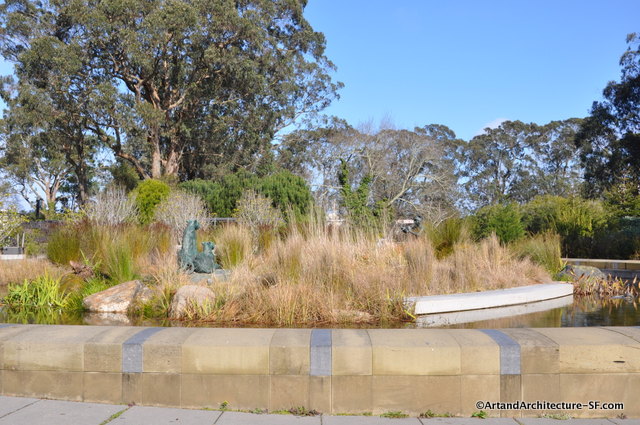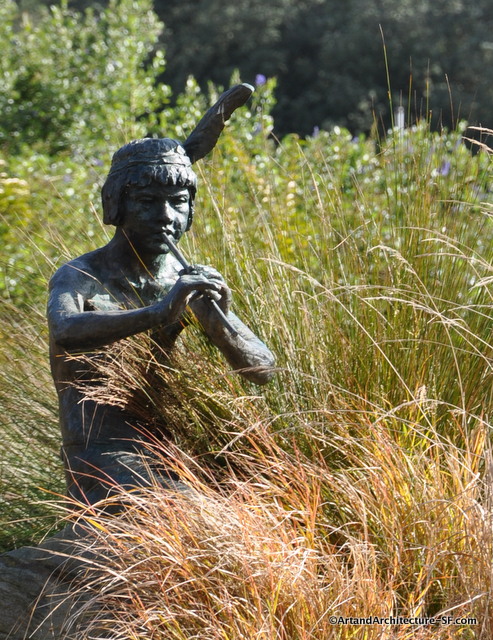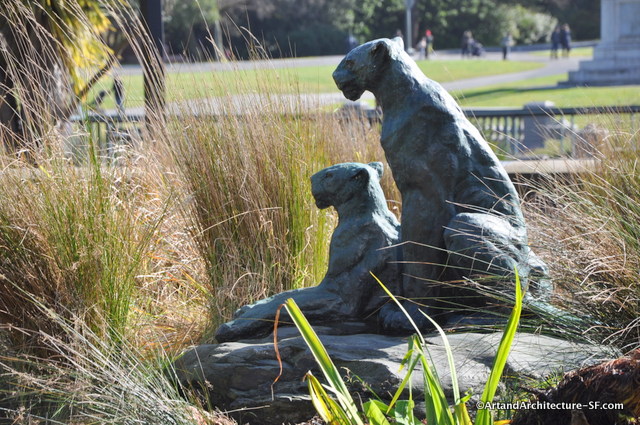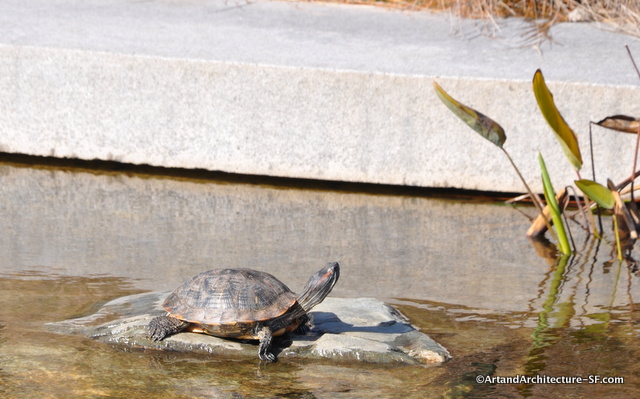This work consists of four parts, the young man playing a reed flute, the cats listening, the island of vegetation, and the pool (The Pool of Enchantment).
The animals are lifelike bronze statues of native California mountain lions. The young man does not look like any particular person or ethnic group, portraying the better nature common to all humanity. Since the sculpture was first placed in 1894, the ferns and reeds have had to be replanted, but the original boulders and turtle-sunning rocks remain the same.
M. Earl Cummings (given name Melvin Earl Cummings) was born in Salt Lake City, Utah on August 13, 1876. As a teenager Cummings was apprenticed to a wood carver in decorating the Mormon Temple. After moving to San Francisco in 1896, he won a scholarship to the Mark Hopkins Institute of Art where he was a pupil of Douglas Tilden. His benefactress, Mrs. Phoebe Hearst enabled his further study in Paris with Mercie at Ecole des Beaux Arts. Returning to San Francisco, he exhibited regularly at the Bohemian Club while sharing a studio with his close friend and sculptor Arthur Putnam. He taught sculpture at the Mark Hopkins until 1915 and also was instructor of modeling at University of California Berkeley from 1904-16. He did numerous portrait busts, statues, and public monuments and served on the San Francisco Park Commission for 32 years.




I really like this one and always like to see a turtle sunning itself!
[…] a pinecone and stands directly on the soil, rather than a pediment. The statue was sculpted by M. Earl Cummings, (Cummings is responsible for many of the statues in Golden Gate Park) around 1911. It was […]
[…] lion sits outside of the new DeYoung Museum near the Pool of Enchantment. It is by Roland Hinton Perry. Created in 1898 it was given to the City of San Francisco in 1906 […]